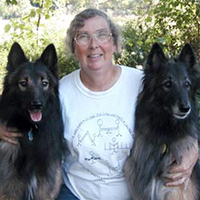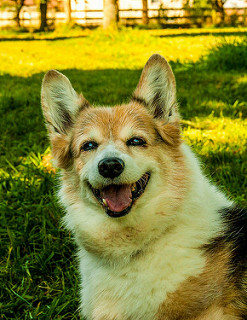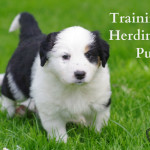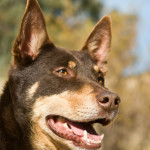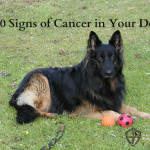Acquired Eye Problems in Herding Breed Dogs
How Your Herding Breed Dog’s Eye Health is in Jeopardy
Active herding breed dogs are prone to acquired eye problems and injuries due to their active lifestyles. In part one of this series, we covered normal vision and in part three, we’ll cover the genetic eye problems associated with herding breeds.
The herding breeds, as a group, tend to be very active dogs. They love to run through fields, dash through woods, hike anywhere, anytime you want to and compete in many dog sports. While doing all these things, their eyes can be exposed to irritants and injuries.
Dust and dirt lead the list of possible eye irritants, along with dry plant material like seeds and awns. Some herding breeds are fairly low to the ground, like Pembroke and Cardigan Welsh Corgis, which makes them very susceptible to dust blowing into their eyes. Even tall dogs, like Briards, can get dust, plant seeds and dirt rubbing their corneas.
The cornea is the delicate tissue on the outside of the eyeball. When foreign objects blow onto the cornea, the dog will tear in an attempt to flush the material out of the eye. The tear film, though, is not always successful or the object may have already scratched the cornea before it is flushed out. An injured cornea is susceptible to infection, which may lead to a corneal ulcer – basically a very severe corneal scratch.
You may notice your dog blinking, squinting his eye, rubbing his eye or even holding his eye shut. Corneal injuries are quite painful and your dog may resist you examining his eye. There may be tearing with a clear discharge or you may see thick, pus-like discharge if there is infection. Eye problems are notorious for going from mild to severe quickly, so a visit to your veterinarian is always in order if your dog shows any type of eye problem.
Your veterinarian will apply a drop of topical anesthetic to the eye. The eye may also be dilated for an exam as well. A drop of fluid or a paper impregnated with fluorescein will be applied to the eye. If your dog has a corneal scratch or ulcer, the area will fluoresce bright green. Treatment generally consists of eye ointment or drops, which will need to be applied faithfully multiple times per day. Some dogs need an Elizabethan cone to prevent rubbing. In extreme cases, a medicated contact may be applied or the eye may be sutured shut for a brief period to allow for healing.
It is difficult to totally prevent corneal injuries. You can minimize the risk by flushing your dog’s eyes after outings in rough country, working livestock in a dusty arena, etc. Artificial tears work well for eye flushes.
Many dogs will develop a blue/gray cast to their eyes as they age. This could be an old age cataract, but it may be a milder condition called nuclear sclerosis. Nuclear sclerosis is a hardening of the lens in the eye. This does not cause much visual problem for a dog – it mostly affects near vision and dogs tend to be nearsighted to begin with.
Old age cataracts can look very similar but can be distinguished by your veterinarian with an ophthalmoscopic exam. Old age cataracts tend to be small and have a minimal effect on vision. This is not true of cataracts associated with trauma to the eye or developed as a secondary effect of diabetes. Some herding breeds are also susceptible to inherited cataracts. Those cataracts may have more of an effect on vision and show up fairly early in life – generally before five years of age.
Cataracts may lead to blindness. If the cataract develops slowly or only one eye is affected, many dogs will appear to have vision and you might not notice a problem unless you move the furniture around. Dogs are excellent at “memory maps” that tell them where things are in their environment. They also use scent trails.
There is no treatment for cataracts other than surgical removal. This surgery should be done by a specialist and requires intensive aftercare for the best healing. Some veterinarians suggest using an antioxidant supplement to help delay the development of cataracts and promote good eye health in senior dogs.
There are other acquired eye problems such as glaucoma which can develop in herding breed dogs but those are less common. By far the most common acquired problem is an injury to the cornea. Having some artificial tears in your first aid kit to flush your dog’s eyes after outings is an excellent idea!
Article By:
Deb M. Eldredge, DVM
Meet Our Evangelist
